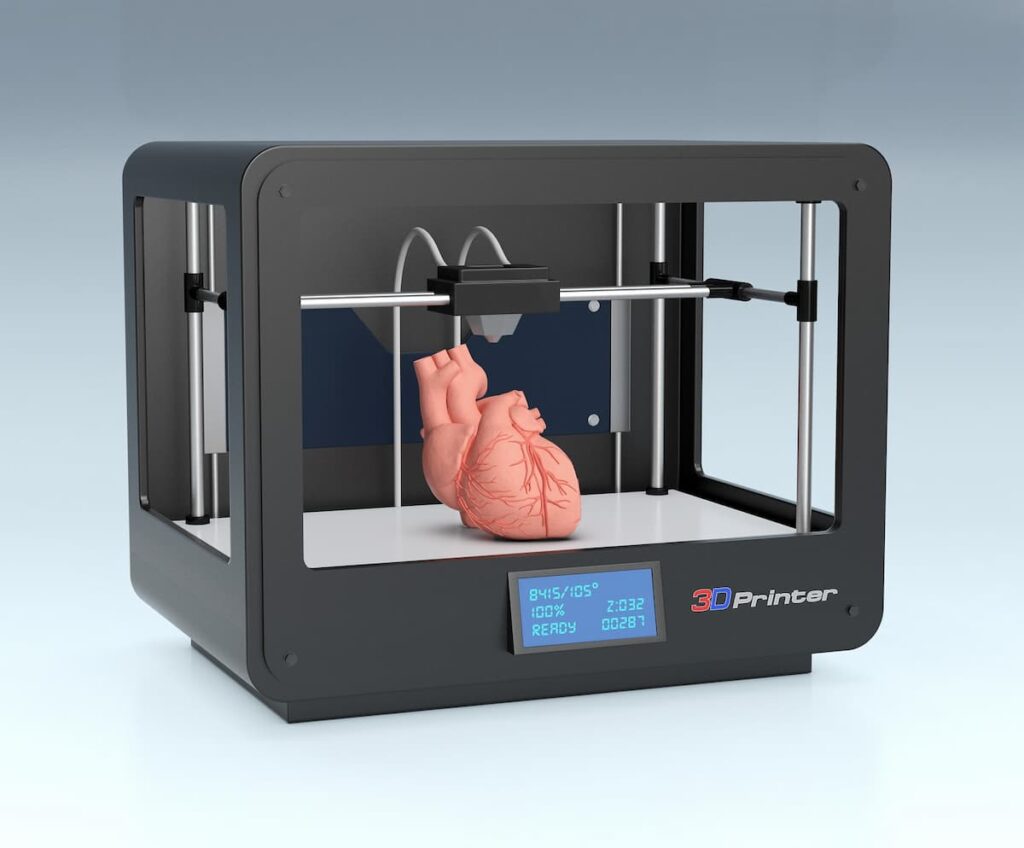A 3D Bioprinting Stock That’s Not Organovo
Table of contents

One thing we’ve noticed over the years is that the way we imagine a disruptive technology being commercialized is rarely how things actually transpire. We’re seeing that now as 3D printing business models and technologies evolve over time into something different. The same can be said for the companies that are involved in disruptive technologies where things move fast and investors expect things to happen quickly. If you don’t move quickly to commercialize a new technology at scale, there are plenty of companies that will gladly fill that void.
It’s been a while since we’ve looked at 3D bioprinting, a disruptive technology that we imagined would involve 3D printing replacement organs for the human body. One of the most promising stocks back in the day was a company called Organovo (ONVO). We’ve written a number of articles about the firm, the last being an article titled “An Organovo Article With a Negative Spin” which pointed out how the company seemed overly focused on the way they were being perceived by the media. It’s understandable why a firm would be focused on investor relations, especially if they’re being attacked by short sellers for example. Still, it’s hard not to be thinking negative things about Organovo as we all wait for the revenue growth to happen. From our last article:
On the first day of 2012, Organovo had 22.4 million shares outstanding and since then that number has risen to 81.5 million. With the shares outstanding having nearly quadrupled, investors can take some solace in the fact that Organovo has $50 million in cash as of March 31, 2015. Given last year’s cash burn was $19.6 million, we can expect another 2.5 years of funded operations provided that costs don’t increase.
That was written almost four years ago and at the same time, we noted how investors keep waiting and waiting for those big revenues to show up. We’re all still waiting as the company continues to burn through cash and now has 119.5 million shares outstanding.

3D bioprinting may be a tough game for Organovo, but not so much for another 3D bioprinting stock we’re going to look at today called CELLINK (CLNKB:SS).
A Nordic 3D Bioprinting Stock
The story of CELLINK is one that doesn’t follow the typical timeline of a technology firm that raises venture capital with hopes of an eventual exit down the road. Founded in 2016, Swedish firm CELLINK had only been in existence for ten months before they decided to pursue their IPO in November of 2016. At that time, their $10,000 bioprinter could be found “in 25 countries around the world, mostly universities in the US and Asia, but even some private customers.” That’s according to an article by Business Insider which talks about how CELLINK listed on Nasdaq First North after a 1070% oversubscribed IPO. (Roughly speaking, that means that demand for their shares was 10X what they expected.) Since then, shares have risen +400% giving the company a present-day market cap of around $257 million.

As you can see in the above chart, shares have risen sharply since the beginning of last year. Let’s take a look at what sort of products the company offers.
CELLINK’s Product Offerings
Today, CELLINK products can be found in more than 600 labs in over 50 countries. In addition to offering their own 3D bioprinter, CELLINK has also developed an entire suite of products and consumables including “the first universal bioink that’s compatible with any cell type in any 3D-bioprinting system.” Here are some of their hardware devices that are either in development or commercially available.

Apart from the two bioprinters seen above – BIO X and INKREDIBLE – they’ve also developed a number of other hardware products.
- CELLCYTE X is a cost-effective and high-throughput live cell imaging system which lets you incubate your creations and see how they’re progressing.
- I-DOT is a robotic device added to their product suite as a result of acquiring a German startup called Dispendix for around $5.6 million. The robot can be used for all your liquid handling tasks from filling plates to creating reagent mixes from multiple solutions.
- Lumen X is a machine they developed with another startup called Volumetric. The tool uses over a million points of light to bioprint microscopic features down to 200 microns and is used for applications in microfluidics, cell-laden hydrogels, macroporous structures, and more.
- Holograph X is a tool they’ve developed with a startup called Prellis Biologics which came up recently in our article on 9 Regenerative Medicine Companies for Living Longer. With a price tag of $1.2 million, Holograph X enables rapid 3D printing of high-resolution structures that match human capillaries and the finest extracellular matrices.
In addition to these hardware products, the company offers an entire suite of bioinks along with consumables like needles and nozzles. Most importantly, companies are buying these products and using them resulting in a growing revenue stream for CELLINK. You can build the coolest products imaginable but if you can’t get the industry to adopt them, you’re out of luck. What’s notable about CELLINK is who they’re working with.
CELLINK’s Customers and Partners
CELLINK dedicates an entire section of their website to showcase the various accomplishments being made using their 3D bioprinting technologies. One notable event last year was when researchers at the University of Newcastle managed to 3D print an entire human cornea. That news was particularly notable because there is a shortage of corneas available for transplant. It took only ten minutes to print which means we may soon have an unlimited supply of human corneas. Additional research work is being performed on CELLINK’s products at the world’s most notable academic institutions – the company’s largest customer group is universities and research institutions – but they’ve also managed to land some very notable commercial users as well.

In December of last year, CELLINK entered into a collaboration with MedImmune, the research and development branch within AstraZeneca, to look at using 3D-bioprinted tissues as a tool in the research of new diseases. Other notable collaborations announced by the company include the Massachusetts Institute of Technology, Takara Bio, and a firm called CTIBIOTECH who they’re working with to print cancer tissues. The company now offers a complete range of products in 50 countries worldwide, with the United States as the largest market followed by Asia and Europe. As their install base increases, the consumption of bioink also increases, and that’s how the company has been able to achieve high margins leading to profitability in their last quarter.
CELLINK’s Financials
3D bioprinting is a disruptive technology that’s only now beginning to build some momentum. Companies that provide the picks and shovels for emerging technologies are among the first to benefit as technologies begin to take off and everyone buys hardware and consumables as they explore applications. (Think about how well Illumina has fared by providing the picks and shovels for exploring the world of genetics.) Strong consistent revenue growth is almost an expectation, and CELLINK doesn’t disappoint. For all of 2018, they saw $4.88 million in revenues. That’s not a very big number – about the same as Organovo – but it’s consistently growing. For the first quarter of 2019, CELLINK already brought in $2.15 million in revenues, a growth of 148% over the same quarter in 2017.

More importantly, last quarter was a profitable one which means soon they won’t need to sell more shares (in other words, dilute existing investors) to fund their operations. They’re also managing to secure funding from grants offered by the European Union which is essentially just free funding. All those dollars are being used to grow their full-time staff – from 24 at the beginning of 2018 to 100 today – and expand their global footprint.

For a company that’s not even four years old, CELLINK has managed to accomplish a lot very quickly. It’s quite remarkable to think that when we last wrote about Organovo, this company didn’t even exist.
Conclusion
What’s notable about CELLINK is that they’re working with other companies to expand their product offering. They’re also not afraid to acquire complementary products as they’ve done with Dispendix which will contribute 1.28 million in revenues for the remainder of this year. Since they have their foot in the door at more than 600 labs with existing products, it’s easy enough to then up-sell additional products. CELLINK appears to be quite aware of what’s happening in the world of 3D bioprinting, and our next article on this topic will look at some of the promising 3d bioprinting startups out there that they’re probably keeping a close eye on. In the meantime, we’ll continue to keep our fingers crossed that Organovo can get out of the doldrums and show some consistent revenue growth for their investor base that’s been waiting way far too long for it.
Sign up to our newsletter to get more of our great research delivered straight to your inbox!
Nanalyze Weekly includes useful insights written by our team of underpaid MBAs, research on new disruptive technology stocks flying under the radar, and summaries of our recent research. Always 100% free.














